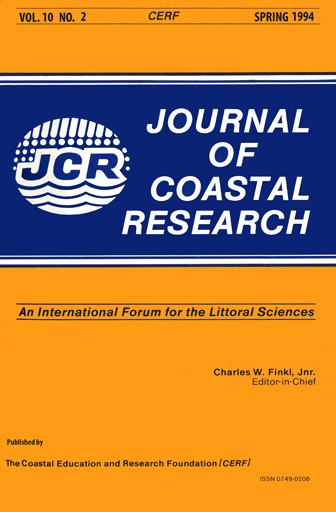Application of the Log-Hyperbolic Distribution to Hawai'ian Beach Sands
Keywords:
Coastal geomorphology, coastal sediments, grain size, spatial patterns, environmental discriminationAbstract
Statistical parameters of the log-normal distribution have been widely used in the textural analysis of particle size data. Graphical or moment measures have traditionally been used to discriminate between environments and for paleoenvironmental reconstruction. However, recent work has indicated that the log-hyperbolic probability density function may be more appropriate for quantifying observed mass frequency data of sediments. The objective of this study is to assess the applicability of the log-hyperbolic distribution for characterizing Hawai'ian carbonate beach sands and to test whether this model can discriminate between beach subenvironments. A grid-based design was used to sample the upper sedimentation unit at 126 locations on Waimanalo Beach, Oahu, Hawai'i. The log-hyperbolic distribution fit 70%, of the sand samples. Exploratory data analysis indicated that the beach had a complex textural pattern. Therefore, the beach was divided into a backshore zone, and the foreshore was divided into three separate zones, the lower, middle, and upper foreshore. Size and sorting parameters of the log-hyperbolic distribution indicated little significant difference between the upper foreshore and backshore sediments. Typical gain size (v) was coarsest in the lower foreshore (0.43 mm) and finest in the mid-foreshore (0.23mm). Upper foreshore and backshore sediments were the best sorted i.e., the highest values of ᵹ, ᶘ and k), while the lower and middle foreshore zones were the most poorly sorted. The distribution shape (asymmetry) parameter π indicated that all four subenvironments were significantly different, with a median value of -0.45 for the lower foreshore and a negative skewness (x) of -0.13. These values indicate a dominant coarse population and a subordinate fine population. A hydrodynamic hypothesis is presented to explain the complex spatial pattern of beach sediments. This involves energy dissipation and traction load deposition in the lower foreshore, and subsequent shoreward transport of finer particles in the less competent swash. Infiltration into the beach sediments produces a shoreward fining sequence that is subsequently modified by selective aeolian transport.


